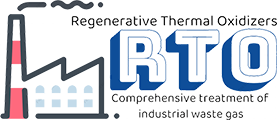What are the energy recovery options for RTO in the coating industry?
Introducere
In the coating industry, Regenerative Thermal Oxidizers (RTOs) play a crucial role in reducing air pollution and capturing volatile organic compounds (VOCs). However, the operation of RTOs requires a significant amount of energy. This article will explore the various energy recovery options available for RTOs in the coating industry and their benefits.
1. Direct Energy Recovery
– Direct energy recovery involves the transfer of heat from the hot flue gas exiting the RTO to a heat exchanger.
– The recovered heat can then be utilized for process heating, preheating incoming air, or generating steam.
– Direct energy recovery systems help to reduce overall energy consumption and operating costs in the coating industry.
2. Indirect Energy Recovery
– Indirect energy recovery systems utilize a secondary heat transfer fluid, such as thermal oil or water, to capture and transfer the heat from the RTO.
– This recovered heat can be used for various purposes, including space heating, water heating, or power generation.
– Indirect energy recovery systems provide flexibility in heat utilization and can contribute to substantial energy savings.
3. Combined Heat and Power (CHP)
– Combined Heat and Power, also known as cogeneration, involves the simultaneous production of electricity and useful heat.
– In the coating industry, CHP systems can utilize the heat generated by the RTO to produce electricity, which can be used on-site or sold back to the grid.
– The utilization of CHP technology maximizes energy efficiency and reduces greenhouse gas emissions.
4. Waste Heat Recovery
– Waste heat recovery systems capture the excess heat generated by the RTO that would otherwise be wasted.
– This recovered heat can be used for various applications, such as preheating combustion air or water.
– Waste heat recovery enhances overall energy efficiency and reduces the environmental impact of the coating industry.
Concluzie
In conclusion, the coating industry has several energy recovery options for RTOs. Direct energy recovery, indirect energy recovery, combined heat and power, and waste heat recovery are all viable solutions that can significantly reduce energy consumption and contribute to a more sustainable coating industry. By implementing these energy recovery options, companies can not only save on operating costs but also reduce their carbon footprint. It is crucial for the industry to embrace these technologies to achieve a greener and more efficient future.


Introducere companie
We are a high-end equipment manufacturing enterprise specializing in the comprehensive treatment of volatile organic compounds (VOCs) and carbon reduction and energy-saving technology in the coating industry. Our core technologies include thermal energy, combustion, sealing, and control. We have the capabilities for temperature field simulation, air flow field simulation modeling, ceramic heat storage material performance, selection of zeolite molecular sieve adsorbents, and high-temperature incineration and oxidation testing of VOCs.
Team Advantage
Our RTO technology research and development center and waste gas carbon reduction engineering technology center are located in Xi’an, and we have a 30,000 square meter production base in Yangling. We are a leading manufacturer in the global market for RTO equipment and zeolite molecular sieve rotary wheel equipment. Our core technical team comes from the Aerospace Liquid Rocket Engine Research Institute (Aerospace No. 6 Institute). We currently have over 360 employees, including more than 60 research and development technical backbones, including 3 senior engineers, 6 senior engineers, and 111 thermodynamics PhDs.
Produse de bază
Our core products include the Rotary Valve Thermal Oxidizer (RTO) and zeolite molecular sieve adsorption concentration rotary wheel. With our expertise in environmental protection and thermal energy system engineering, we provide customers with integrated solutions for comprehensive treatment of industrial waste gas and carbon reduction through heat energy utilization under various working conditions.

Certificari, brevete și onoruri
- Certificarea Sistemului de Management al Proprietății Intelectuale
- Certificarea Sistemului de Management al Calitatii
- Certificarea Sistemului de Management de Mediu
- Construction Industry Enterprise Qualification
- Întreprindere de înaltă tehnologie
- Patent for Rotary Valve Thermal Oxidizer (RTO)
- Patent pentru echipamente de incinerare pentru stocarea căldurii cu roți rotative
- Patent for Disk Zeolite Rotary Wheel
Choosing the Right RTO for the Coating Industry
- Determine exhaust gas characteristics
- Înțelegeți reglementările locale și standardele de emisii
- Evaluați eficiența energetică
- Luați în considerare operarea și întreținerea
- Analiza bugetului si costurilor
- Select the appropriate RTO type
- Luați în considerare factorii de mediu și de siguranță
- Testarea și verificarea performanței

Regenerative Thermal Oxidizers Service Process
- Consultare preliminară, inspecție la fața locului și analiza nevoilor
- Solution design, simulation modeling, and solution review
- Producție personalizată, control al calității și testare în fabrică
- Servicii de instalare, punere în funcțiune și instruire la fața locului
- Întreținere regulată, asistență tehnică și aprovizionare cu piese de schimb
We are a one-stop solution for RTO, providing customized RTO solutions for our clients. We have a professional team dedicated to tailoring RTO solutions to meet their specific needs.
Successful RTO Case Studies in the Coating Industry
- Project 1: A company in Shanghai specializes in producing functional films such as diffusion membranes, prism films, micro-perforated films, and solar films. The project includes a 40,000 airflow RTO in phase one and a 50,000 airflow RTO in phase two.
- Project 2: A company in Guangdong specializes in new materials such as transfer paper, transfer film, aluminum electrolysis, polyester film, window film, and protective film. The total waste gas volume is 70,000 m3/h, and the equipment achieves emission compliance upon completion.
- Project 112: A company in Zhuhai specializes in wet lithium battery separators, and the system has been running without any malfunctions since its implementation.
Autor: Miya
